Posted on March 22nd, 2010 by Jaimie Schock
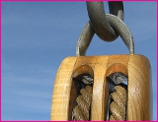 In this activity for grades 6-8, students gain first-hand experience with the mechanical advantage of pulleys. Students are given the challenge of helping save a whale by moving it from an aquarium back to its natural habitat into the ocean. They set up different pulley systems, compare the theoretical and actual mechanical advantage of each and discuss their recommendations as a class.
In this activity for grades 6-8, students gain first-hand experience with the mechanical advantage of pulleys. Students are given the challenge of helping save a whale by moving it from an aquarium back to its natural habitat into the ocean. They set up different pulley systems, compare the theoretical and actual mechanical advantage of each and discuss their recommendations as a class.
Read More
Filed under: Class Activities, Grades 6-8, Grades 6-8, Lesson Plans | Comments Off on Lesson: Lift and Pull
Tags: Class Activities, Lesson Plan, Mechanical engineering, Physical Science, Physics, Science Lesson Plans
Posted on March 22nd, 2010 by Jaimie Schock
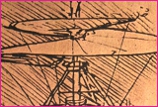 Across three or more class periods, students in grades 4-8 combine their own ideas with the elements of machines to imagine and design inventions to solve specific challenges. Using a variety of materials, they can create small working models of their inventions to test and improve them.
Across three or more class periods, students in grades 4-8 combine their own ideas with the elements of machines to imagine and design inventions to solve specific challenges. Using a variety of materials, they can create small working models of their inventions to test and improve them.
Read More
Filed under: Class Activities, Grades 6-8, Grades K-5 | Comments Off on Activity: Be Inventive!
Tags: Class Activities, Da Vinci, Grades 4 and 5, Grades 6-8
Posted on March 15th, 2010 by ASEE
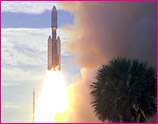 In this simple, exciting demonstration of Newton’s Laws of Motion, students in grades 5-8 construct a rocket powered by the pressure generated from an effervescing antacid tablet reacting with water. They undertake the work of aerospace engineers in exploring design elements that can affect a spacecraft’s performance.
In this simple, exciting demonstration of Newton’s Laws of Motion, students in grades 5-8 construct a rocket powered by the pressure generated from an effervescing antacid tablet reacting with water. They undertake the work of aerospace engineers in exploring design elements that can affect a spacecraft’s performance.
Read More
Filed under: Class Activities, Grades 6-8, Grades K-5 | 3 Comments »
Tags: Aerospace, grades 5-8, NASA, Newton's Laws
Posted on March 15th, 2010 by ASEE
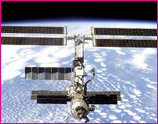 In this activity, middle school students use tracking software available on the Internet to monitor a very large satellite, the International Space Station. Using information from this online resource, students predict and graph the motion of the space station at their location and create a 3-D display of its path through the sky.
In this activity, middle school students use tracking software available on the Internet to monitor a very large satellite, the International Space Station. Using information from this online resource, students predict and graph the motion of the space station at their location and create a 3-D display of its path through the sky.
Read More
Filed under: Class Activities, Grades 6-8 | Comments Off on Class Activity: Satellite Tracker
Tags: Aerospace, Aerospace Engineering, International Space Station, Satellites
Posted on March 1st, 2010 by ASEE
 Students grades 5-12 assume the role of civil engineers in constructing a model suspension bridge. They learn about other types of spans — including arch, girder, truss, and cantilever — and of the careful balance of compression and tension required in bridge building.
Students grades 5-12 assume the role of civil engineers in constructing a model suspension bridge. They learn about other types of spans — including arch, girder, truss, and cantilever — and of the careful balance of compression and tension required in bridge building.
Read More
Filed under: Class Activities, Grades 6-8, Grades 6-8, Grades 9-12, Grades 9-12, Lesson Plans | 2 Comments »
Tags: Bridge building, Bridge Design, Civil Engineering, Grades 5-12
Posted on February 22nd, 2010 by ASEE
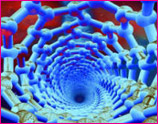
This “Nano Waterproofing” lesson explores how materials can be modified at the nano scale to provide features such as waterproofing and stain resistance. Student teams develop their own waterproofing technique for a cotton fabric and test their design against a fabric that has been altered through nanotechnology applications.
Read More
Filed under: Class Activities, Grades 6-8, Grades 6-8, Grades 9-12, Grades 9-12, Lesson Plans | Comments Off on Lesson: Nano Waterproofing
Tags: Chemical, Class Activities, Design, Grades 6-8, Grades 9-12, Lesson Plans, Nanotechnology
Posted on February 15th, 2010 by Jaimie Schock
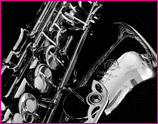 Energy transfer is a central concept in the majority of engineering designs, including designs for musical instruments. In this lesson, students will grasp the concepts of energy and energy transfer, and then apply what they’ve learned by designing and building their own musical instruments.
Energy transfer is a central concept in the majority of engineering designs, including designs for musical instruments. In this lesson, students will grasp the concepts of energy and energy transfer, and then apply what they’ve learned by designing and building their own musical instruments.
Read More
Filed under: Class Activities, Grades 6-8, Grades 6-8, Lesson Plans | Comments Off on Lesson: Energy Transfer in Musical Instruments
Tags: Class Activities, Curriculum, Energy, Lesson Plans, Music engineering
Posted on February 8th, 2010 by Jaimie Schock
 Students build a simulated luge track and make predictions about the impact of surface type, wind resistance, size of slope, and shape of luge on their track; test their predictions by conducting several simulated luge runs; and make conclusions about the effects of physical forces on the sport of luging.
Students build a simulated luge track and make predictions about the impact of surface type, wind resistance, size of slope, and shape of luge on their track; test their predictions by conducting several simulated luge runs; and make conclusions about the effects of physical forces on the sport of luging.
Read More
Filed under: Class Activities, Grades 6-8, Grades 6-8, Grades K-5, Grades K-5, Lesson Plans | 6 Comments »
Tags: Class Activities, Curriculum, Grades 3-8, Lesson Plan, Lesson Plans, Teacher Resources
Posted on February 8th, 2010 by ASEE
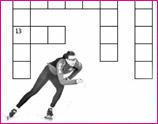
From the hinge in the slap skate to the texture of the swift suit, engineering enhances athletic achievement. Challenge your students to test their knowledge of the technology used in this exciting Olympic sport with a fun crossword puzzle for grades 6-12. Clues can be found in this week’s feature on speed skating, and in the answer key.
Read More
Filed under: Class Activities, Grades 6-8, Grades 9-12 | 1 Comment »
Tags: Crossword Puzzle, Fun & Games, Olympics, Sports
 In this activity for grades 6-8, students gain first-hand experience with the mechanical advantage of pulleys. Students are given the challenge of helping save a whale by moving it from an aquarium back to its natural habitat into the ocean. They set up different pulley systems, compare the theoretical and actual mechanical advantage of each and discuss their recommendations as a class.
In this activity for grades 6-8, students gain first-hand experience with the mechanical advantage of pulleys. Students are given the challenge of helping save a whale by moving it from an aquarium back to its natural habitat into the ocean. They set up different pulley systems, compare the theoretical and actual mechanical advantage of each and discuss their recommendations as a class.








 Across three or more class periods, students in grades 4-8 combine their own ideas with the elements of machines to imagine and design inventions to solve specific challenges. Using a variety of materials, they can create small working models of their inventions to test and improve them.
Across three or more class periods, students in grades 4-8 combine their own ideas with the elements of machines to imagine and design inventions to solve specific challenges. Using a variety of materials, they can create small working models of their inventions to test and improve them. In this simple, exciting demonstration of Newton’s Laws of Motion, students in grades 5-8 construct a rocket powered by the pressure generated from an effervescing antacid tablet reacting with water. They undertake the work of aerospace engineers in exploring design elements that can affect a spacecraft’s performance.
In this simple, exciting demonstration of Newton’s Laws of Motion, students in grades 5-8 construct a rocket powered by the pressure generated from an effervescing antacid tablet reacting with water. They undertake the work of aerospace engineers in exploring design elements that can affect a spacecraft’s performance. In this activity, middle school students use tracking software available on the Internet to monitor a very large satellite, the International Space Station. Using information from this online resource, students predict and graph the motion of the space station at their location and create a 3-D display of its path through the sky.
In this activity, middle school students use tracking software available on the Internet to monitor a very large satellite, the International Space Station. Using information from this online resource, students predict and graph the motion of the space station at their location and create a 3-D display of its path through the sky. Students grades 5-12 assume the role of civil engineers in constructing a model suspension bridge. They learn about other types of spans — including arch, girder, truss, and cantilever — and of the careful balance of compression and tension required in bridge building.
Students grades 5-12 assume the role of civil engineers in constructing a model suspension bridge. They learn about other types of spans — including arch, girder, truss, and cantilever — and of the careful balance of compression and tension required in bridge building. 
 Energy transfer is a central concept in the majority of engineering designs, including designs for musical instruments. In this lesson, students will grasp the concepts of energy and energy transfer, and then apply what they’ve learned by designing and building their own musical instruments.
Energy transfer is a central concept in the majority of engineering designs, including designs for musical instruments. In this lesson, students will grasp the concepts of energy and energy transfer, and then apply what they’ve learned by designing and building their own musical instruments.  Students build a simulated luge track and make predictions about the impact of surface type, wind resistance, size of slope, and shape of luge on their track; test their predictions by conducting several simulated luge runs; and make conclusions about the effects of physical forces on the sport of luging.
Students build a simulated luge track and make predictions about the impact of surface type, wind resistance, size of slope, and shape of luge on their track; test their predictions by conducting several simulated luge runs; and make conclusions about the effects of physical forces on the sport of luging.